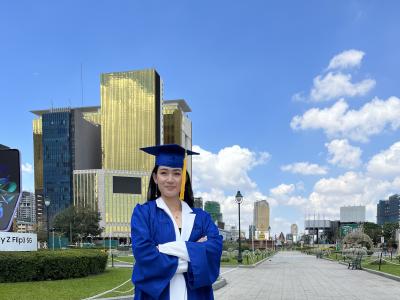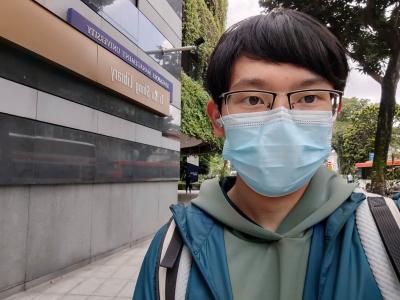
This article is the third in a series of essays by students from the Singapore Management University Arts and Culture Management programme.
The arts has always been a significant and cherished part of my life. Whenever I can, I watch theatre productions and concerts; they broaden my perspective by enabling me to view the world through different lenses. Unfortunately, as much as I loved the possibilities that the arts is able to create, I was disheartened by the thought that I will not be able to pursue work in the arts as I am not artistically inclined.
The Arts and Culture Management Programme in Singapore Management University helped me to realise that the arts is an ecosystem supported by a diversity of roles beyond art-making, such as arts writing, technical support, producing, programming, curating and education.
However, arts management still felt like an extremely broad field of practice for me. Hence, when the opportunity arose for me to pursue an industry project, I decided to research the actual practices and perspectives of arts managers in Singapore. I interviewed four arts managers from the performing arts, each with a unique background, distinct point of entry into the arts, and a disparate job title. Despite their differences, a common thread is how they are more than just administrators, but vital enablers supporting the arts ecosystem in multifold and distinctive ways.
Here are five insights on how arts managers are vital nodes enabling the arts ecosystem in Singapore to survive and thrive:
1. The responsibilities of arts managers cannot be simply defined and contained within a categorical box
When asked for their understanding of the role of arts managers, my interviewees tended to describe the role as a flexible and dynamic one. According to them, arts managers must be versatile and possess numerous skillsets and knowledge, such as marketing, fundraising, and stakeholder liaison.
As independent producer Mok Cui Yin states, an arts manager’s role can include “everything except making the art itself”. She further elaborates “everything” as the strategic planning and management required to protect the conditions in which the artistic work is developed, realised and executed.
Given the broad scope, General Manager of The Necessary Stage (TNS), Melissa Lim emphasises the need for aspiring arts managers to acquire practical work experiences that would enable them to know people, get involved and do all the dirty work.
2. The term “manager” is a misnomer, as the work of arts managers also involves creative and critical thinking
Although arts managers spend many hours handling operational and seemingly mundane tasks such as book-keeping and sending emails, their work is not just administrative.
As former Managing Director of TheatreWorks, Tay Tong claims, the definition of an arts manager is “someone who goes beyond managing”, as he or she is “actually making art” as well. Apart from logistically and administratively supporting the artists, arts managers have to understand the creative concepts behind the artworks so as to accurately devise creative strategies to present and to communicate the value of the work to diverse audiences. These strategies require a “sensitivity to the ‘language gap’ between the artist and the public” (Bendixen, 2000).
3. Arts managers act as bridges between various stakeholders.
To preserve and protect the artistic integrity and purpose of the artwork, arts managers have to develop creative methods to negotiate with different groups of stakeholders, from sponsors to regulatory bodies and arts practitioners.
Melissa Lim makes it a point to engage in early negotiation with censors, because she believes that a work that retains its artistic integrity in spite of compromises made can create greater impact than work that is banned. She acknowledges and appreciates the “intricacies of [the negotiation process] and the kind of negotiation techniques [arts managers] have to master”.
Preserving a project’s integrity and purpose goes beyond the manifestation of the final work; it includes protecting the environment in which work is created, the dynamics between the project collaborators and stakeholders, the indicators used to measure the ‘success’ or impact of a project, etc.
It requires stakeholders’ values and agendas to align with each other and the initial motivations of the project as well. Michele Lim highlights that communication and honesty are key to ensure this alignment. Mok also adds that sometimes, the point of disagreement may not be due to misalignment of agendas, but the approaches to achieve them. It is up to the arts managers to propose alternative ways to meet these agendas and “does justice to the process of the project and the principles”.
4. Arts Managers go to lengths to protect and uphold the value of the arts
They view projects through wider lenses, where they prioritise the purpose of the project. Tay mentions that the projects he works on start with a vision, but there is a constant refinement process, which requires continuous evaluation of the projects’ resonance and their impact on the people involved.
They also convey the value of the arts through audience development and engagement. Melissa Lim talks about how TNS, through their outreach programmes with students and seniors, aims “to encourage them to think differently in their lives” and sends the message that they “don’t have to be an artist to be creative” and can “apply that artistic desire in other areas.” Their yearly M1 Singapore Fringe Festival’s programmes are capped below $30, to reach out to new audiences for more “experimental work”. She believes that it is necessary to maintain the affordability, to reinforce the notion that “art is for the masses”, not just for “people with money in their pockets”.
5. Exemplary arts managers are visionaries who dare to make a difference
Arts managers enable artmaking by building artists’ capacity and capabilities, giving them resources, or spaces to develop and grow their artwork. Exemplary arts managers go beyond their immediate day-to-day tasks to create and protect the conditions under which art is made, sometimes even with the understanding that there would not be immediate outcomes. Michele Lim believes very strongly in facilitating the strategic planning competencies of arts organisations, by offering herself as an objective but also sympathetic third-party consultant. Rather than simply prescribe general recommendations for improvement, Michele Lim believes in the need to “walk alongside” with her clients so as to assist them in strengthening the clarity of their purpose and focus.
Arts managers also require critical foresight. For instance, while Mok is working with artists to ensure that their work presented is “the best possible version of itself given the current conditions”, she also envisions possible future opportunities for the work that she then strives to actualise.
This is similar to how Tay has a dream project every year where he takes the risk to trust in his belief in certain works to “become more than just an idea”. One example was how he and the TheatreWorks team awarded multidisciplinary artist Zai Kuning with a residency in 2001, despite no promise of any concrete outcomes in his proposal. The research that Zai embarked on then, first manifested in a film in 2005, finally became ‘Dapunta Hyang: Transmission of Knowledge’ today, and has been presented multiple times, on notable platforms such as Esplanade – Theatres by the Bay and the Singapore Pavilion at the 57th Venice Biennale. As Tay states, arts managers should be visionary.
Arts managers also enable the flourishing of the arts ecosystem, sometimes in seemingly tiny and insignificant actions that within a larger context, build and contribute to a sharing culture. While these actions may not have a direct impact on their current projects, they are able to recognise the importance of creating a collegiate culture where people are willing to share resources and render guidance. Tay emphasises that it is important that he “can be an enabler, can make things happen and connect people.”
Both Melissa Lim and Mok also mention this idea of giving back to the ecosystem, and they do so in their own capacity—TNS allows other artists, often smaller groups, and also a migrant theatre group to use their space for rehearsals whenever possible, while Mok is currently mentoring two final year arts management students.
Exemplary arts managers are enablers, facilitators and bridges that are essential to a growing, thriving arts ecosystem. They genuinely believe in the value of the arts, and in the artists they work with as well. They strive to make their projects meaningful endeavours in different, creative ways.
When asked if she had a role she identified with the most, Michele Lim’s answer captured the essence of being an arts manager: “If you ask me what’s central to whatever I do, it’s really about working with people, and developing and growing people, …not necessarily realising but working towards [their dreams]. […] It’s also about pushing boundaries and norms, not conforming to them.” This resonated with me because that is how I see arts managers and why I want to become one—to enable artists, and also the arts in reaching many people, creating open, thinking and empathetic minds.
This article was first produced in March 2018 for ACM005 Arts and Culture Management Industry Project Module, and was first published by Arts Equator on 4 October 2018. All information stated was accurate as of then. The article does not reflect any of the viewpoints of the interviewees but is a subjective interpretation of the writer.


